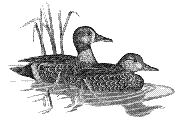US Fish & Wildlife Service
Date of this Version
January 1992
Abstract
The wood duck is North America’s most widely distributed endemic species, and most of its wintering and breeding range falls within the 48 contiguous states (Fig. 1). The wood duck inhabits forested wetlands and, because of its need for nest cavities, is closely tied to North America’s remaining forest resources. Habitat destruction, market hunting, and liberal hunting seasons contributed to drastic declines and, in some cases, regional eradication of local wood duck populations. Subsequent implementation of hunting restrictions and the high reproductive rate of the species are responsible for the recovery of wood duck populations to current stable levels.
As prairie duck populations continue to decline, hunting pressure on the wood duck continues to increase. The wood duck is popular with hunters and consistently ranks high among species in Atlantic and Mississippi flyway duck harvests. Harvest pressure and continued degradation of riparian and lowland hardwood forests increases the need for a thorough understanding of wood duck population dynamics. Equally important to sustaining current wood duck population levels is an understanding of annual life cycle events and requirements.



Comments
Published in Diana H. Cross and Paul Vohs (eds.) Waterfowl Management Handbook. Fort Collins, CO: U.S. Fish and Wildlife Service, 1992. Online at http://www.nwrc.usgs.gov/wdb/pub/wmh/contents.html